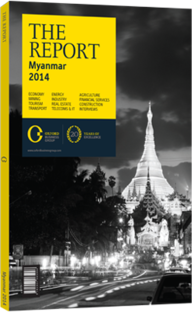Dressed for success: Foreign investment is key to expanding garment manufacturing
Garment manufacturing is likely to be a key driver of Myanmar’s economic growth going forward. Not only was it a major part of the economy before sanctions were enacted, but it has also been one of the fastest to recover. The garment business is set to expand considerably in the near to mid term as foreign investment pours in and pre-sanction capacity is put back in place.
By Numbers
According to the Myanmar Investment Commission, foreign direct investment (FDI) is set to more than double in fiscal year (FY) 2013/14, ending March 31, 2014, to $3.5bn, up from $1.4bn in the same period year-on-year. U Aung Naing Oo, director-general of the Directorate of Investment and Company Administration, told local press that most investment is going towards manufacturing, primarily garment manufacturing. The relative performance of garments in FDI is a matter of scale. U Aung Naing Oo said that smaller projects such as garment factories are relatively easy to negotiate and approve, taking about six to seven months, while larger investments can take years. In the last eight months of 2012, 19 foreign companies made investments in the Myanmar garment segment. The momentum seems to be holding and interest appears broad. Among the foreign players coming to the country in FY2013/14 are companies from the UK, China and Singapore and include Costic International, Honeys Garment Industry, Nadia Pacific Apparel Company, manufacturer GFT Enterprise Company, JS Filter Company, Eurogate Sportsware, THY Garment Company, Shinsung Tongsang Inter Company, Korea Link Industrial Company and Mac Do Company.
More international companies are slated to arrive soon as well. The Myanmar Investment Commission has announced that six foreign firms will be allowed to run garment factories by the second half of 2014. The companies are expected to investment about $10m in each plant for a total of $60m.
Setting Up Shop
In a way, the trend is as much an indicator of concern as it is confidence. Garment factories tend not to be too capital intensive, so they are easier to commit to when compared with other heavy industry investments. U Myat Thin Aung, chairman of Yangon’s Hlaing Thar Yar Industrial Zone, told The Irrawaddy, a regional news publication, that heavy industry would wait until after the 2015 elections, when political stability is better assured.
Others say that even if the elections go well, some companies will continue to hold off making major investments until after the new government’s economic policies are set, perhaps not until as late as the end of 2016.
The potential for newcomers to export their finished product is high. Figures from the Myanmar Garment Manufacturers Association (MMA) show that total exports from the country’s 200 or so garment factories reached $770m in 2011. The key export markets are Japan, with $348m and 34% of total clothing exports, and South Korea, with $232m, followed by Brazil, Argentina, South Africa and Turkey. Now the US has lifted most sanctions on Myanmar, manufacturers anticipate increased demand in the near future.
In addition, Myanmar does not yet have the labour issues found in other low-wage countries in the region.
In Cambodia, garment workers went on strike in December 2013 in an effort to get the minimum wage doubled from $80 to $160 a month, and in early January 2014, three striking factory workers were killed by police. Meanwhile, work stoppages and other types of industrial action are being increasingly reported in China. In Bangladesh, workers protested in 2013 in an effort to get wages doubled to $104 per month.
FDI and foreign expertise will be critical to ensuring Myanmar does not see the same difficulties. While the garment sector has provided the country with some early success stories, it has a significant way to go before it returns to pre-sanction capacity. Furthermore, consistent policies must be maintained and the government needs to keep bureaucratic bottlenecks to a minimum. In addition, land prices need to be examined, as rapidly increasing property prices are making investment in some areas of Myanmar financially unfeasible.
You have reached the limit of premium articles you can view for free.
Choose from the options below to purchase print or digital editions of our Reports. You can also purchase a website subscription giving you unlimited access to all of our Reports online for 12 months.
If you have already purchased this Report or have a website subscription, please login to continue.

